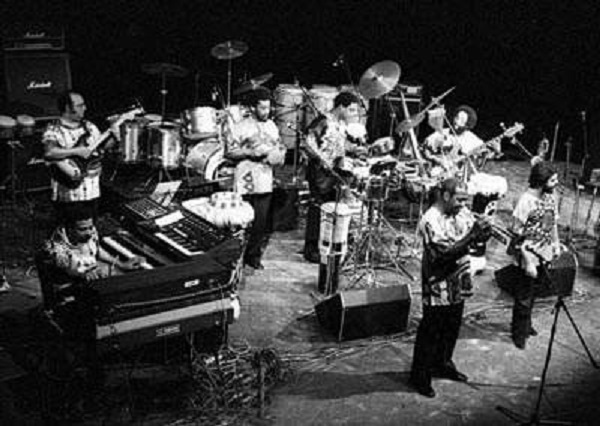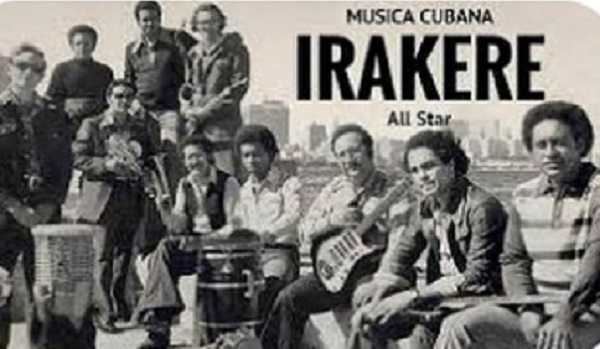Jesús Chuito Narváez was born in Margarita on August 26, 1950. He began his musical career as a player of stringed instruments such as the guitar, cuatro and bass.
On Monday, January 16, 2006, at 6:00 a.m., Jesús “Chuito” Narváez, pianist of the golden age of the Latin Dimension, died in La Guaira at the age of 55 due to a liver disease.Especially for the guitar instrument with which he debuted with “Los Tremendos” in La Guaira and under the tutelage of Edgar Evers in the late sixties and early seventies.

Precisely in 1971, the famous Estrellas Latinas of composer Cheo Palmar (a group that included Canelita Medina, Joe Ruiz, Calavén, El Flaco Bermúdez, Cheo Navarro, among others), made a record in which Chuito recorded the guitar on one of the sides of the 45 rpm.
In that group Los Tremendos bought a piano so that Chuito could learn to play it, and it is when he had the opportunity to replace Nano Ladera, pianist of Los Satélites and they recorded the LP: “Saltando el Muro” in 1972, an album that reached the first places in NY especially for the song: “Traicionera”.

Cheché Mendoza’s Satélites, after jumping the wall to fame in other yards, constantly traveled to achieve the success that in their own land they were denied, one of those frequent travelers was Chuito himself, a fact that prevented him from recording the first album of Dimensión Latina in its entirety, where there was the need in the song Julia to use the piano of Professor Franklyn Stuart or Eddie Frankie or rather Tony Monserrat, who like a serious madman leaves that string of madmen who were the members of the Latin Dimension, so when Chuito returns from his trip to Aruba, Curaçao and Bonaire he must make the difficult decision to choose between the Satellites (with whom he had recorded another album : “Cheché himself, disillusioned by the little affection in his homeland, encourages him to go with the Dimension, where he begins a fruitful career of 14 long durations.
In 1979, Dimensión Latina had already suffered the loss of Oscar D’León in July 1976, in February 1978 Wladimir to go with Oscar, until after a series of rumors Chuito together with Rodrigo Mendoza also left the group fulfilling contracts until March 15, when he was replaced by the excellent Colombian pianist Samuel Del Real.
Chuito Narváez and Rodrigo Mendoza formed the Orquesta Amistad in April 1979, recording three albums: “Presente y Pasado” in 1979, “El Poder de la Amistad” (1979), and “Calavén y Yo” in 1981, with the legendary Negrito Calavén replacing Rodrigo who had left with La Salsa Mayor.
With the Orquesta Amistad Chuito changed his structure with the dimension and incorporated three and four trumpets, two trombones and the flute of the young Natividad Martínez.

Chuito himself once declared: I am not pedantic, because I don’t like that, but my aspirations are to have one of the best orchestras and to be able to alternate with those who are said to be the best. In his first album, the vocalists Rodrigo and Tito Gómez compete with one of his greatest hits: Ritmo de Azúcar (1979).

Fuente:
Read also: Lizna Tovar winner in the category Voice Over of the year 2022 in Canary Islands Tenerife




















